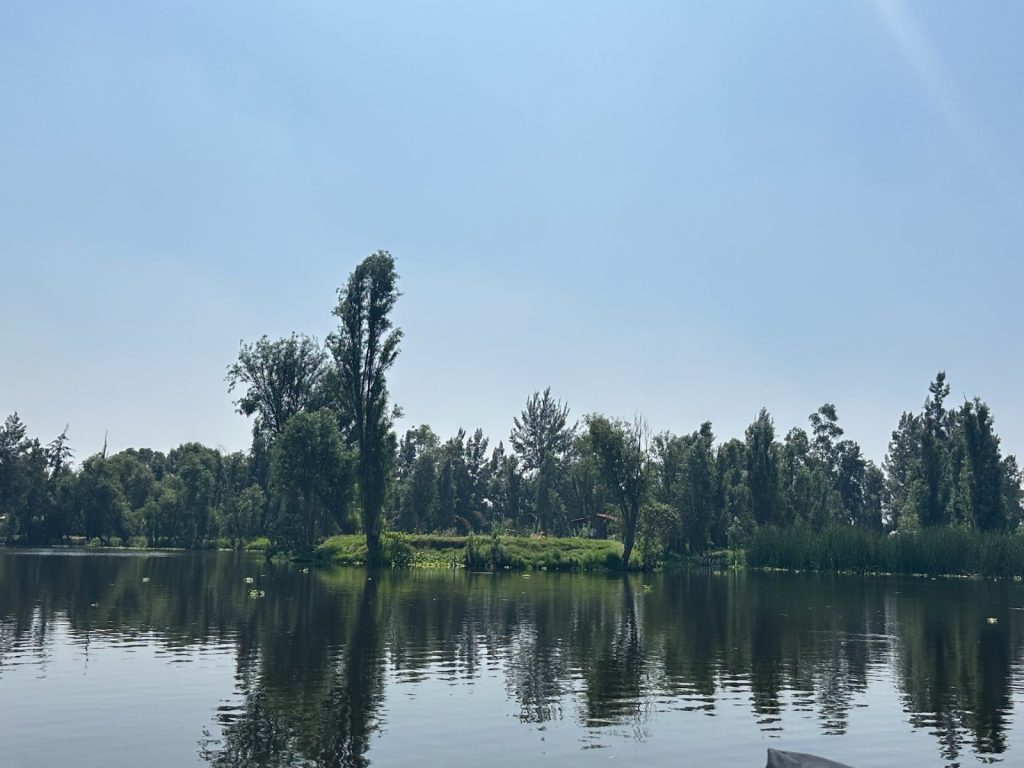by Victor Vazquez
Chinampas are artificial islands that persisted in the Valley of Mexico for Millenia, the Aztecs came to the valley around the 13th to 14th century AD and mass produced chinampas to feed their empire. Chinampas were built by creating an underwater fence in a rectangular formation in a shallow lake area, and then filling the underwater fence with organic matter until it reached the desired height above the water level. These chinampas were used for intensive agriculture, with some 7 harvests per year at peak functionality. This form of agriculture persisted because of its high yield sustainable farming model. Fertile moist mud was brought from the bottom of the lake in order to reliably germinate seeds. The technique that the chinamperos (chinampa farmers) used to create nurseries was taking the mud and flattening it out in a 4in thick slab, the mud was cut into cubes and then they made a hole in the mud cube with their fingers and put the seed inside. This type of nursery is shown in the image below.
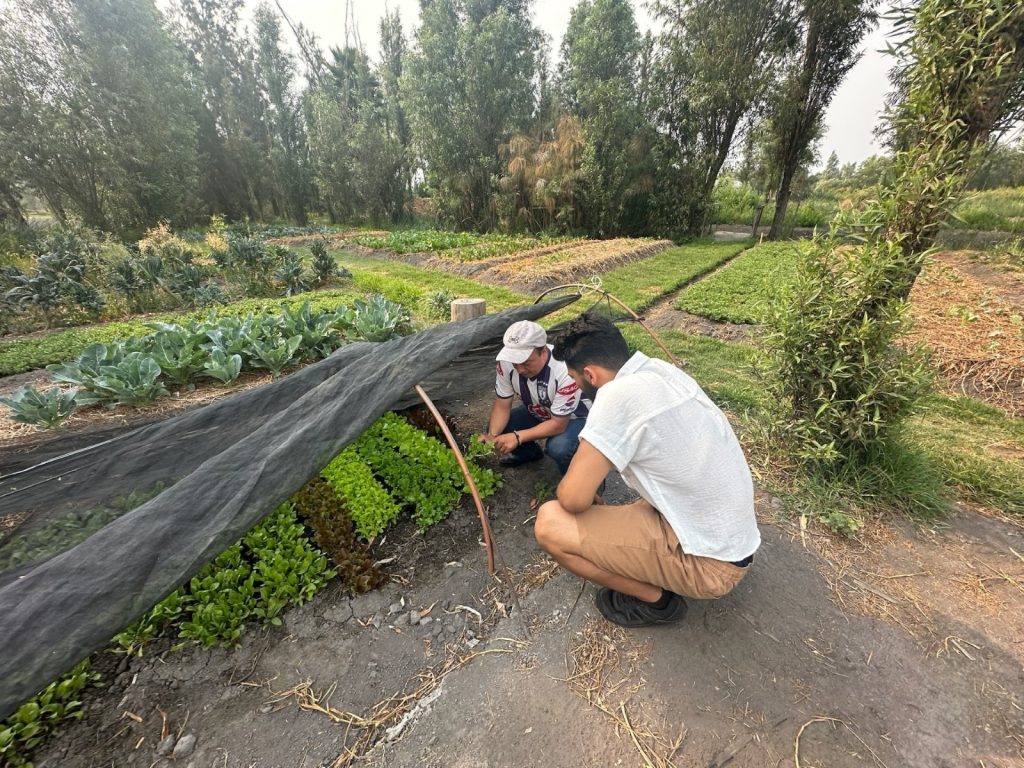
In order to get a better understanding of the current state of chinampas, I went to 2 organizations in Mexico City to look at the chinampas in Xochimilco. The 2 organizations were Olintalli and ChinampasXochimilco as shown in the images below.
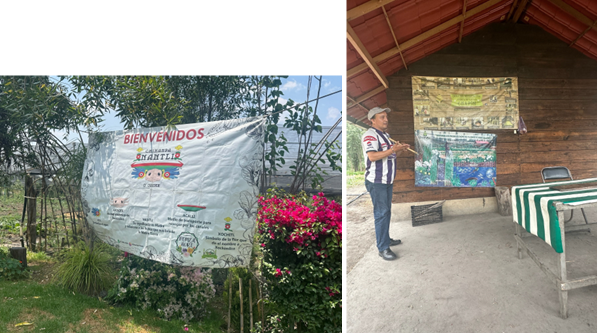
The main form of tourism that occurs in Xochimilco are the boat tours and party boats. The boat tours, which I chose, are informational tours that are meant to bring awareness to the problems happening in the chinampas of Xochimilco. The money is used to support the chinamperos that still farm on the chinampas and make a living from it. The party boats on the other hand are another issue that the chinampas face, since the tourists litter the water with plastic bottles and other toxic trash. The tourism allows money to flow within Xochimilco, but comes at an environmental cost, with a solution being difficult since money is necessary to build more traditional nurseries and other water treatment structures within Xochimilco, as well as food, since only a fraction of the chinampas available are used for food production. The image below shows an illegal settlement with trash and decreased water level.

Some of the problems that Marco Polo Tellez Orozco (president of Olintalli) and Sara Sandoval mentioned were that many of the chinampas are being abandoned by the chinamperos in favor of moving to Mexico City or migrating to the US for a better life. This has led to illegal land selling, since proving ownership of the chinampas is next to impossible unless it has been passed down from prior generations of chinamperos. Also, many illegal structures are being built on the chinampas for families in need of shelter or for companies that want to capitalize on the tourism within the canals of the chinampas. The main problems that the chinampas in Xochimilco face is the lack of and quality of water. At one point in the 1900’s, the Mexican government permitted the release of sewage into the canals in an attempt to maintain the water levels. Sara told me that there are also dams built in order to keep the water level high in the touristy spots, which leads other canals and chinampas to suffer with a lack of water. Without a sufficient water level, the roots of the ahuejote trees that border the chinampas are exposed, which leads to strain on the plant and an inevitable death. The image below shows how much the water levels have decreased in this area, with the top of the underwater fence showing.
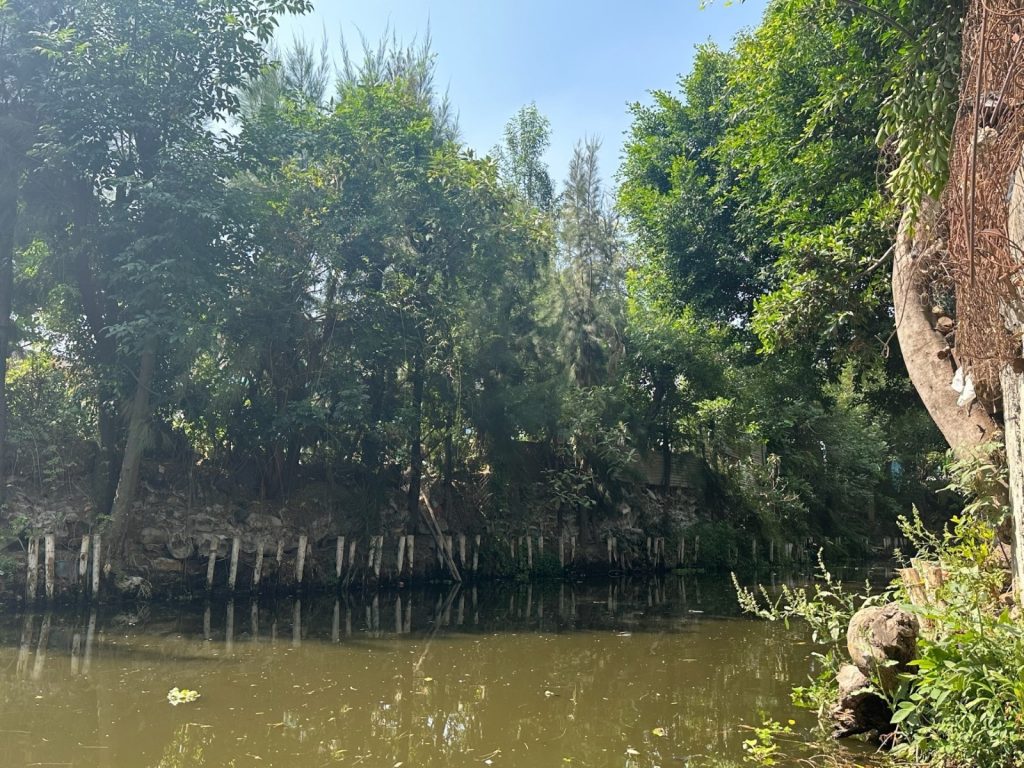
To combat these issues, both Marco and Sara are involved in going back to the traditional farming methods that were employed by the indigenous people of Xochimilco. The traditional mud nurseries with the straw ground cover in order to retain the moisture in the ground. They are growing different varieties of lettuce, kale, corn, garlic, beets, peppermint, sunflower, and other types of vegetables and flowers. All of the excess organic matter is put into a compost heap where it is then used for the next succession of plants. In the ChinampasXochimilco chinampas, some of the organic matter was put into a black plastic bag, where the gas from the decaying matter was used to cook food using gas pipes and valves. There were also water filtration holes that used a plastic sheet with water lilies as the biofiltering plant and the clean water would be used for irrigation as opposed to directly from the main canals, since the water quality is poor. Both the Olintalli and ChinampasXochimilco chinampas had biofilters installed from UNAM, which is the largest public university in Mexico. The little canal that had the biofilters had clear water, as shown in this image below.
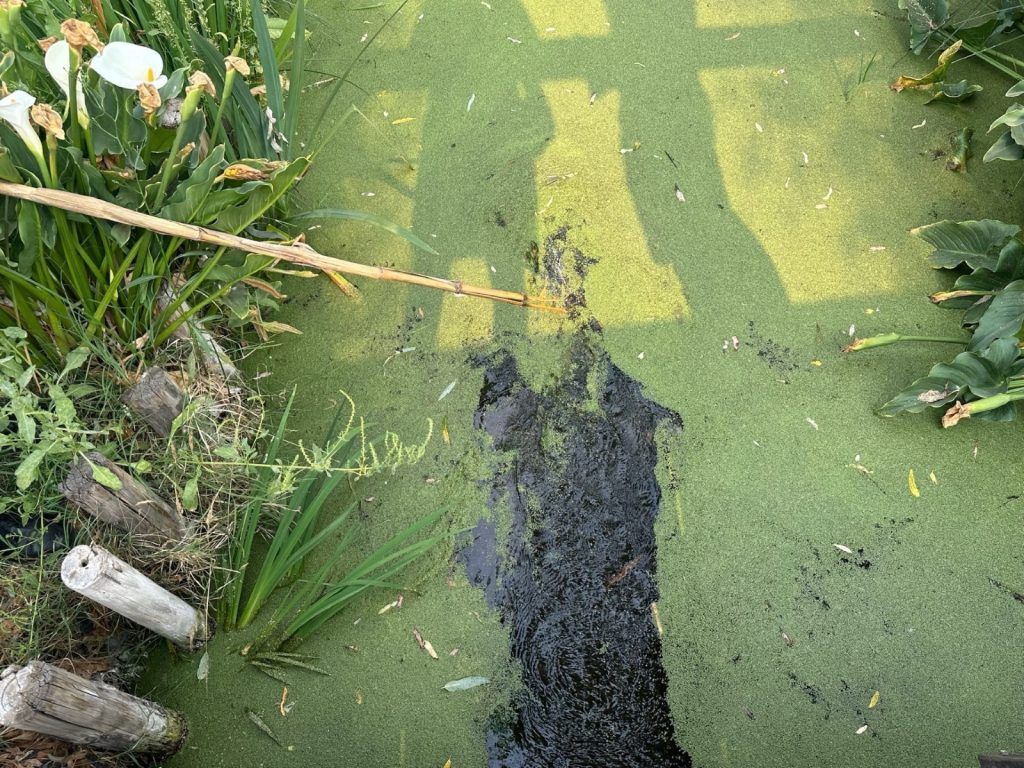
Going to the chinampas in person was amazing, with the beautiful views, flowers, and colorful boats. The chinampas themselves were beautiful and had weeds and flowers interwoven throughout the land. The organizations created sustainable structures for living and cooking which shows how well they can adapt to the ever increasing urbanization of Mexico City. As long as there are people who care about the chinampas and the value they hold culturally and agriculturally, the chinampas can slowly make a comeback from the disturbed water table and pollution from Mexico City and regain some semblance of its former glory.
